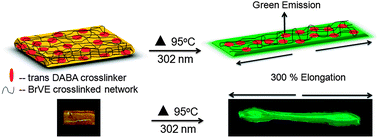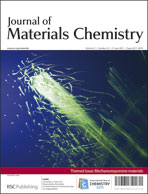Sensing macromolecular rearrangements in polymer networks by stimuli-responsive crosslinkers†
Abstract
A new family of azobenzene crosslinked brominated vinyl ester (DABA–BrVE)

- This article is part of the themed collection: Mechanoresponsive materials

 Please wait while we load your content...
Please wait while we load your content...